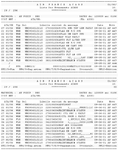RabidAlien
1st Lieutenant
If it were terrorists, it would've been someplace a lot more visible. They're not after mystery and intrigue. They're after publicity. It would've gone down over an airport or populated area somewhere. Al Ka'holik can't claim credit for something nobody sees, and expect to gain anything by it (not that they gain anything except international loathing anyway).

